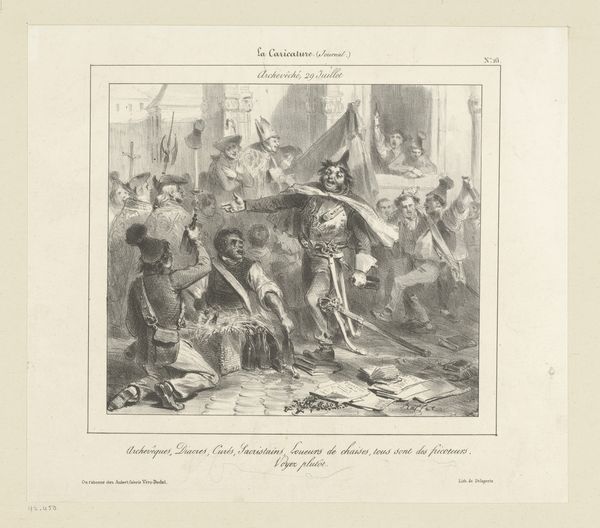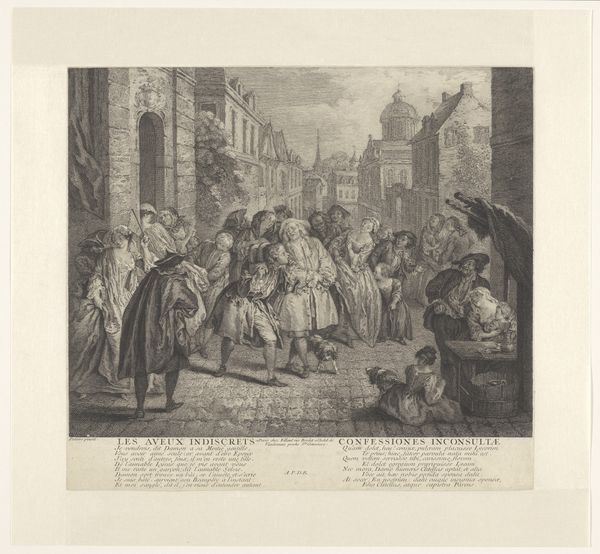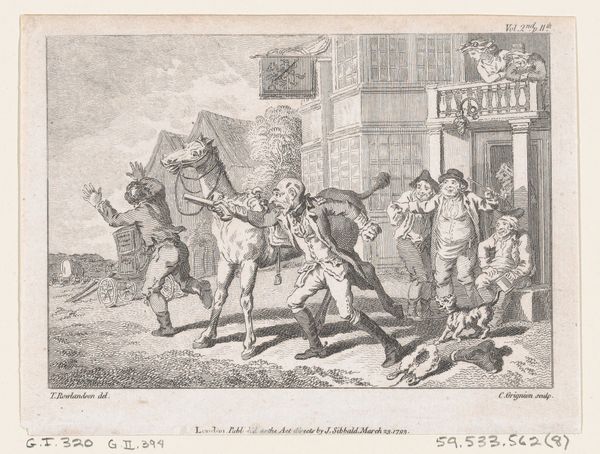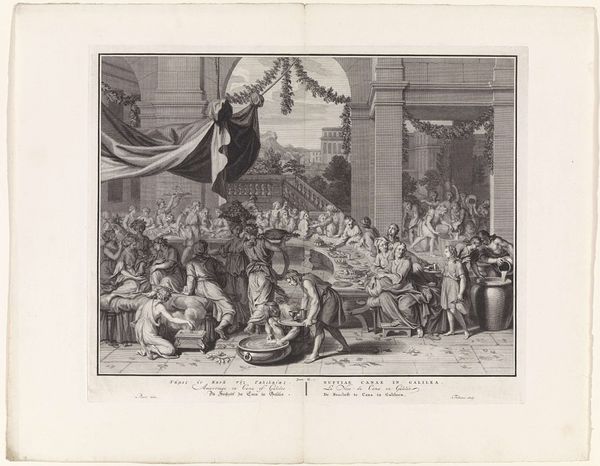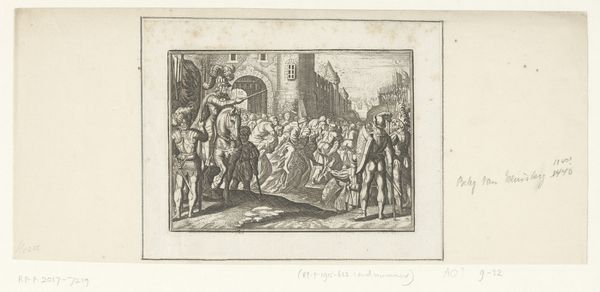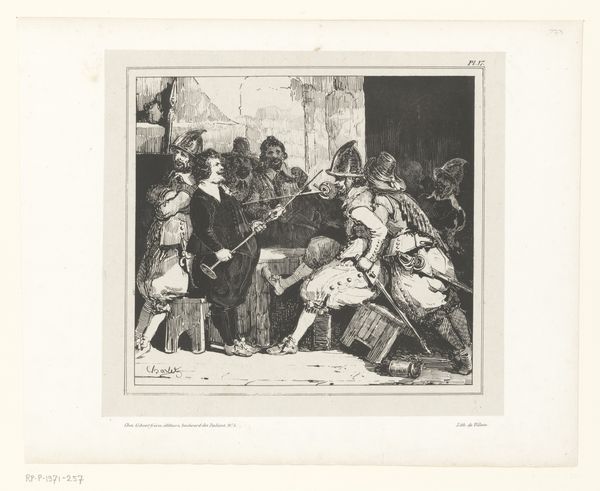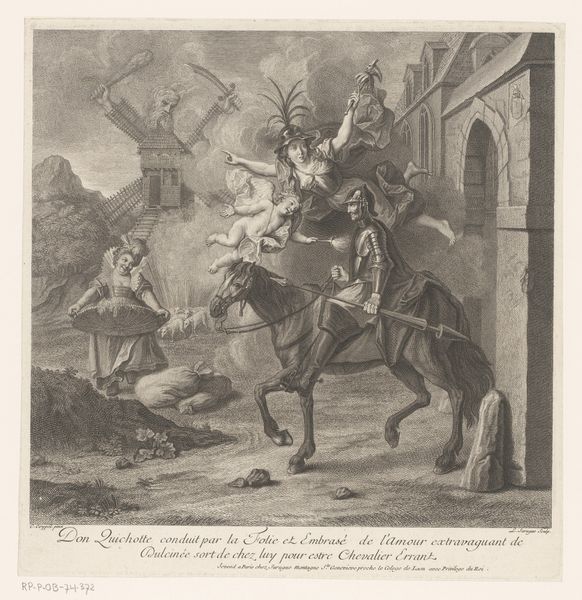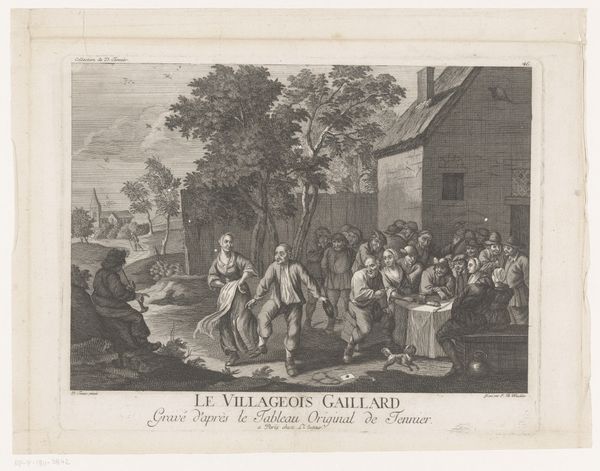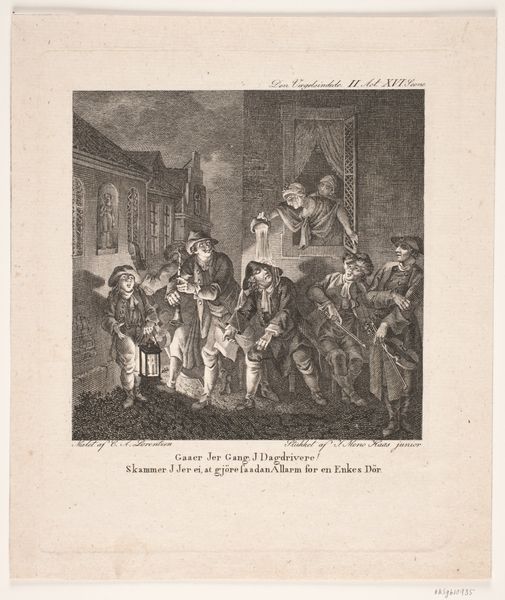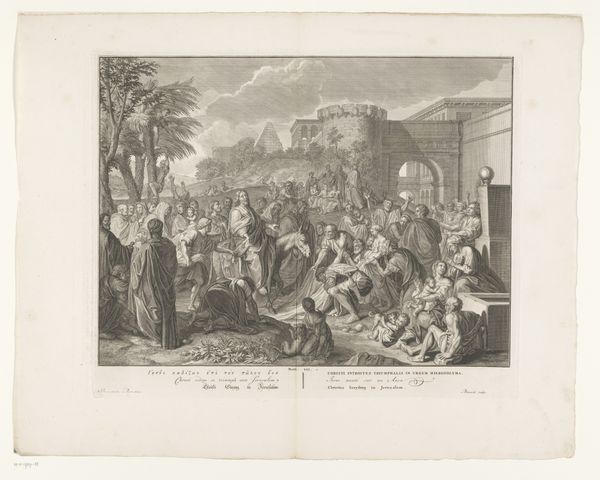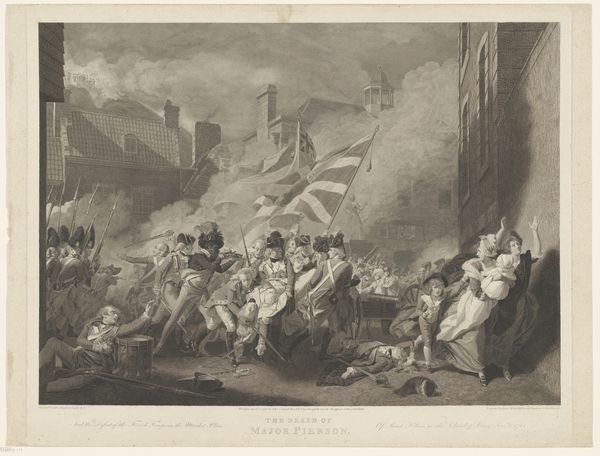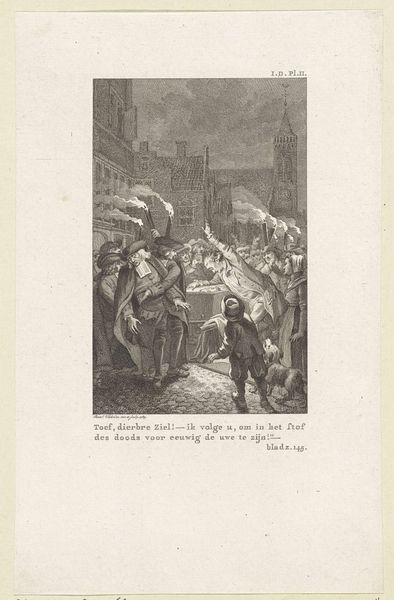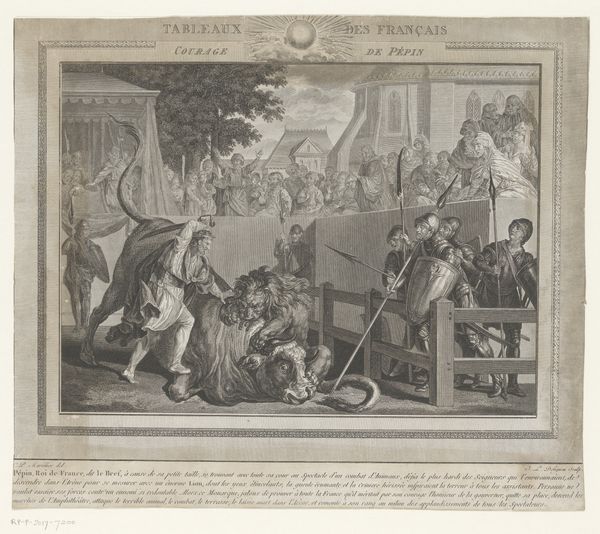
print, etching
#
narrative-art
#
baroque
# print
#
etching
#
figuration
#
cityscape
#
genre-painting
Dimensions: height 296 mm, width 376 mm
Copyright: Rijks Museum: Open Domain
Editor: This etching, titled "Arrival of the Theatre Company in the City of Mans," was created by Louis Surugue in 1729. The way the people are clustered together, watching this theatre company arrive, creates a real sense of drama, doesn’t it? What stands out to you about this image? Curator: Well, immediately, I'm drawn to consider the socio-political context. Theatre companies in the 18th century occupied a very interesting space. Their arrival in a town was a public event, as we see here. It disrupted the everyday and introduced an element of spectacle, which could be seen as either a welcome diversion or a destabilizing influence by those in power. Editor: That’s interesting. A destabilizing influence? Curator: Yes, think about it. Theatre can be a form of social commentary. Depending on the content, these performances could challenge existing power structures. Even the act of gathering a large crowd was, in itself, a statement of public assembly, with political implications. So, this image is not just about entertainment. Editor: So, what would be the artist's motivation for creating the artwork? Curator: Perhaps to comment on the relationship between art, the public, and authority. Was Surugue celebrating theatre, or subtly critiquing its potential impact? The baroque style, with its dramatic flair, amplifies this tension, doesn't it? I wonder how different social classes would react to the print itself? Editor: That is true. I was so focused on the activity represented, I wasn't thinking about the context, or that an artwork can reflect or perpetuate social structures. Thank you! Curator: Exactly! By thinking about these questions we gain insight into the politics of imagery.
Comments
No comments
Be the first to comment and join the conversation on the ultimate creative platform.
